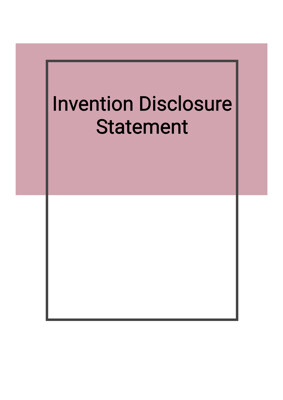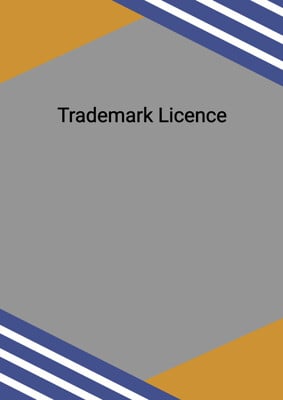
Introduction to Intellectual Property
Guide
A quick summary on the different types of Intellectual Property rights and whether registrations are required. Useful for members who are confused about what documentation and registration procedures are required in relation to Intellectual Property agreements.
How to Tailor the Document for Your Need?
01
Create Document
Click "Create Document" button and the document will be prepared with your account details automatically filled in.
02
Fill Information
Please fill in any additional information by following the step-by-step guide on the left hand side of the preview document and click the "Next" button.
03
Get Document
When you are done, click the "Get Document" button and you can download the document in Word or PDF format.
04
Review Document
Please review the document carefully and make any final modifications to ensure that the details are correct before publication / distribution.
Document Preview
Document Description
The document titled 'Introduction to Intellectual Property' provides a comprehensive overview of the different categories of intellectual property (IP) rights protected in most common law jurisdictions. The document emphasizes the importance of understanding IP rights and the need to consult with a local lawyer due to jurisdictional differences.
The document begins with a summary of IP rights agreements templates, including when to use a trademark license agreement and a copyright license agreement. It explains that these agreements grant the licensee the right to use trademarks or copyright works for commercial production, and they can be drafted in different forms depending on the preferences of the licensor or licensee.
The document then delves into a detailed explanation of the different types of IP rights protected in common law jurisdictions. It covers five main categories: trademarks, patents, designs, copyrights, and trade secrets.
For each category, the document provides a thorough description of the subject matter normally protected, whether registration is required for effective protection, and the main purpose of the corresponding IP law. It highlights that intellectual property is a category of property that includes intangible creations of the human intellect, such as copyrights, patents, and trademarks, and it encourages the creation of a variety of intellectual goods.
The document further explores each category individually:
1. Trademarks: It defines trademarks as recognizable signs, designs, or expressions that identify products or services of a particular source. It explains the difference between registered and unregistered trademarks and the importance of registering trademarks in the jurisdiction of use. It also mentions the option of using the Madrid system to obtain trademark protection in multiple countries.
2. Patents: It explains that patents give their owners the right to exclude others from making, using, selling, and importing an invention for a limited period of time. It emphasizes the requirement of an inventive step and industrial application for an invention to be patentable. It also discusses the distinction between standard patents and short-term patents, as well as the territorial nature of patent protection.
3. Copyrights: It defines copyright as a legal right that grants the creator of an original work exclusive rights to determine its use by others. It highlights the limitations and exceptions to copyright law, including fair use. It covers the protection of various types of works, such as literary, dramatic, musical, and artistic works, as well as sound recordings, films, broadcasts, and cable programs. It also mentions performers' rights and the duration of copyright protection for different types of works.
4. Registered Designs: It explains that registered designs protect the appearance, physical shape, configuration, and decoration applied to an article by an industrial process. It outlines the exclusive rights granted to registered design owners and the duration of protection, subject to renewal. It also mentions the need to register designs in each jurisdiction of use.
5. Trade Secrets: It defines trade secrets as confidential information that is not generally known to the public and confers an economic benefit on its holder. It explains the legal protections for trade secrets, including non-disclosure agreements, work-for-hire and non-compete clauses. It highlights the perpetual monopoly on secret information created by these contractual measures.
Overall, the document provides a comprehensive and detailed introduction to intellectual property, highlighting the importance of understanding IP rights and the need for legal advice due to jurisdictional differences.
How to use this document?
To effectively use the 'Introduction to Intellectual Property' document, follow these steps:
1. Familiarize yourself with the different categories of intellectual property rights, including trademarks, patents, designs, copyrights, and trade secrets. Understand the subject matter protected by each category and whether registration is required for effective protection.
2. Assess your specific intellectual property needs and determine which agreements templates are relevant to your situation. Consider whether you require a trademark license agreement or a copyright license agreement, and choose the appropriate form (neutral, in favor of licensor, or licensee).
3. Consult with a local lawyer to ensure compliance with jurisdictional requirements and to obtain personalized advice tailored to your specific circumstances. Intellectual property laws can vary between jurisdictions, so it is essential to seek professional guidance.
4. If you intend to use trademarks, understand the importance of registration and consider utilizing the Madrid system for international protection. Register your trademarks in the jurisdictions of use to enjoy exclusive rights and prevent unauthorized use.
5. If you have inventions or technical innovations, evaluate their patentability and consider filing for patents. Familiarize yourself with the requirements for patent applications and the territorial nature of patent protection.
6. If you create original works, such as literary, dramatic, musical, or artistic works, understand your rights under copyright law. Be aware of the duration of copyright protection for different types of works and consider taking steps to enforce your rights against infringement.
7. If you have unique designs for articles, explore the option of registering your designs to obtain exclusive rights. Understand the renewal requirements and the need to register designs in each jurisdiction of use.
8. If you possess valuable confidential information, such as trade secrets, take measures to protect it. Implement non-disclosure agreements, work-for-hire, and non-compete clauses to maintain secrecy and prevent unauthorized use.
9. Regularly review and update your intellectual property strategy to adapt to changing circumstances and new developments in intellectual property law. Stay informed about any amendments or updates to the laws in your jurisdiction.
10. Remember that the 'Introduction to Intellectual Property' document serves as a general summary and guide. It is not a substitute for professional legal advice. Always consult with a qualified lawyer to address your specific intellectual property concerns and ensure compliance with applicable laws and regulations.
Not the right document?
Don’t worry, we have thousands of documents for you to choose from:




